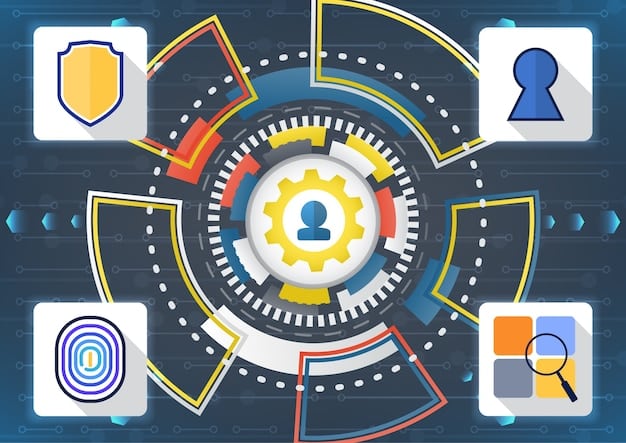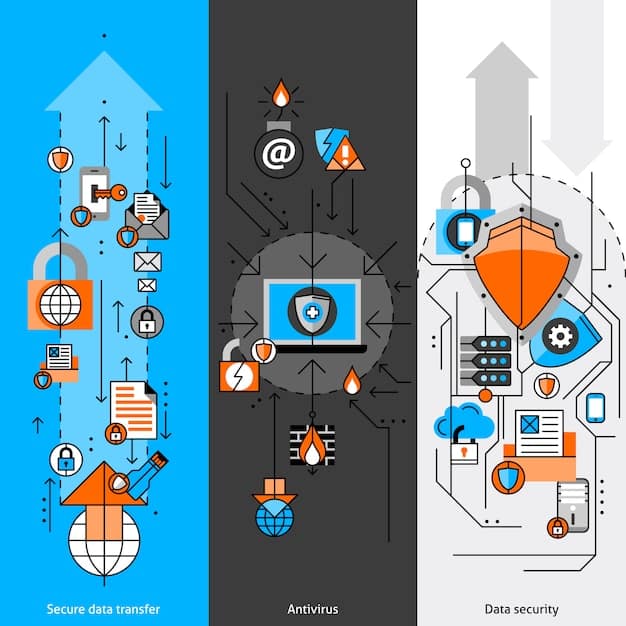NIST Cybersecurity Framework Update: Key Changes & Implementation Guide

The US National Institute of Standards and Technology (NIST) has released an updated Cybersecurity Framework, Version 2.0, to address evolving cybersecurity challenges, expand its scope beyond critical infrastructure, and provide guidance for organizations to better manage and mitigate cybersecurity risks.
Keep your organization secure with the latest insights on the updated US National Institute of Standards and Technology (NIST) Releases Updated Cybersecurity Framework: Key Changes and Implementation Guide.
Understanding the NIST Cybersecurity Framework Update
The National Institute of Standards and Technology (NIST) has long been a cornerstone in providing guidelines and standards for cybersecurity. Its Cybersecurity Framework (CSF) has become a globally recognized resource for organizations looking to manage and reduce their cybersecurity risks. Recently, NIST released an updated version of the CSF, and this update brings significant changes that organizations need to understand and implement.
This article will explore the key changes in the updated NIST Cybersecurity Framework, what these changes mean for organizations, and how to effectively implement the new guidance. We’ll delve into the expanded scope, the refined functions, and the new emphasis on supply chain risk management, providing you with a comprehensive guide to navigating the updated framework.

Key Drivers Behind the Update
Several factors prompted NIST to update the Cybersecurity Framework. These drivers reflect the evolving threat landscape and the need for a more adaptable and comprehensive approach to cybersecurity. Understanding these factors is crucial to appreciating the significance of the changes.
- Evolving Threat Landscape: Cyber threats are becoming more sophisticated and frequent. The updated framework addresses these emerging threats, including ransomware, supply chain attacks, and IoT vulnerabilities.
- Expanded Scope: The initial CSF primarily focused on critical infrastructure. The updated version expands its scope to include all organizations, regardless of size or sector.
- Need for Flexibility: Organizations require a framework that can adapt to their specific needs and risk profiles. The updated CSF offers greater flexibility and customization options.
- Integration with Other Frameworks: The updated CSF is designed to integrate with other cybersecurity frameworks and standards, providing a more holistic approach to risk management.
In conclusion, the update to the NIST Cybersecurity Framework is a response to the dynamic nature of cybersecurity threats and the need for a more inclusive and adaptable framework for organizations of all types.
Major Changes in NIST Cybersecurity Framework Version 2.0
The updated NIST Cybersecurity Framework, Version 2.0, introduces several significant changes compared to its predecessor. These changes reflect the evolving cybersecurity landscape and the need for a more comprehensive and adaptable approach to risk management. Understanding these changes is essential for organizations looking to align their cybersecurity practices with the latest guidance.
Here’s a breakdown of the most notable updates:
Expansion of Scope
One of the most significant changes is the expansion of the framework’s scope beyond critical infrastructure. The initial CSF was primarily designed for organizations in sectors like energy, finance, and healthcare. However, the updated CSF recognizes that all organizations, regardless of size or industry, face cybersecurity risks.
The updated framework provides guidance for a broader range of organizations, including small businesses, non-profits, and government agencies. This expansion ensures that all organizations have access to a common set of cybersecurity principles and practices.
Introduction of the Govern Function
The framework now includes a sixth function: Govern. This function emphasizes the importance of organizational governance and risk management processes. It underscores the need for leadership to be actively involved in cybersecurity decision-making.
The Govern function includes categories such as:
- Organizational Context: Understanding the organization’s mission, objectives, and risk appetite.
- Risk Management Strategy: Developing and implementing a risk management strategy aligned with the organization’s goals.
- Roles, Responsibilities, and Authorities: Defining clear roles, responsibilities, and authorities for cybersecurity within the organization.
Adding “Govern” ensures that cybersecurity is not just an IT issue but is integrated into the organization’s overall governance structure, emphasizing the need for oversight and accountability.

Emphasis on Supply Chain Risk Management
The updated CSF places a greater emphasis on supply chain risk management. Organizations are increasingly reliant on third-party vendors and service providers, which can introduce significant cybersecurity risks. The framework provides guidance on how to identify, assess, and mitigate these risks.
Key aspects of supply chain risk management include:
- Vendor Assessment: Evaluating the cybersecurity practices of potential vendors before engaging with them.
- Contractual Requirements: Including specific cybersecurity requirements in contracts with vendors.
- Monitoring and Auditing: Regularly monitoring and auditing vendors to ensure compliance with cybersecurity requirements.
The heightened focus on supply chain risk management reflects the growing recognition that organizations must protect themselves from vulnerabilities introduced by their vendors and partners.
In summary, the major changes in the updated NIST Cybersecurity Framework include an expanded scope, the addition of the Govern function, and a greater emphasis on supply chain risk management. These changes are designed to provide organizations with a more comprehensive and adaptable framework for managing cybersecurity risks.
Implementing the Updated NIST Cybersecurity Framework
Implementing the updated NIST Cybersecurity Framework requires a systematic approach that involves assessing your current cybersecurity posture, identifying gaps, and developing a plan to address those gaps. It’s crucial to tailor the framework to your organization’s specific needs and risk profile.
Here are the key steps to effectively implement the updated framework:
Step 1: Assess Your Current Cybersecurity Posture
The first step is to assess your organization’s current cybersecurity posture. This involves identifying your critical assets, assessing your existing security controls, and evaluating your risk exposure. You can use various assessment tools and techniques, such as vulnerability scans, penetration testing, and risk assessments.
Step 2: Identify Gaps and Prioritize Actions
Once you have assessed your current cybersecurity posture, you need to identify any gaps between your existing controls and the recommendations in the updated NIST Cybersecurity Framework. Prioritize these gaps based on their potential impact and the likelihood of exploitation.
Step 3: Develop an Implementation Plan
Develop a detailed implementation plan that outlines the specific actions you will take to address the identified gaps. This plan should include timelines, resource allocations, and key performance indicators (KPIs) to measure progress. Ensure that the plan aligns with your organization’s overall risk management strategy.
Step 4: Implement the Framework
Implement the framework by putting the plan into action and continuously working towards gap remediation. This includes:
- Technical Controls: Implement technical controls such as firewalls, intrusion detection systems, and endpoint protection software.
- Administrative Controls: Implement administrative controls such as security policies, procedures, and training programs.
- Physical Controls: Implement physical controls such as access controls, surveillance systems, and environmental controls.
Step 5: Monitor and Improve
Cybersecurity is not a one-time effort. Your implementation should include continuous monitoring and feedback. Regularly review and update your security controls, policies, and procedures to address emerging threats and vulnerabilities. Conduct periodic audits and assessments to ensure compliance with the framework.
In conclusion, implementing the updated NIST Cybersecurity Framework requires a systematic and ongoing effort. By following these steps, organizations can effectively manage their cybersecurity risks and protect their critical assets.
Benefits of Adopting the NIST Cybersecurity Framework
Adopting the NIST Cybersecurity Framework offers numerous benefits for organizations, including improved risk management, enhanced security posture, and increased compliance. By aligning with a globally recognized standard, organizations can demonstrate their commitment to cybersecurity and build trust with stakeholders.
Here are some of the key benefits:
Improved Risk Management
The framework provides a structured approach to identifying, assessing, and managing cybersecurity risks. By following the guidance in the framework, organizations can make more informed decisions about risk mitigation and resource allocation.
Enhanced Security Posture
Implementing the framework helps organizations strengthen their overall security posture. By implementing the recommended controls and practices, organizations can reduce their vulnerability to cyber attacks and protect their critical assets.
Increased Compliance
The framework can help organizations meet compliance requirements under various regulations, such as the Health Insurance Portability and Accountability Act (HIPAA), the Payment Card Industry Data Security Standard (PCI DSS), and the General Data Protection Regulation (GDPR). Alignment with the NIST CSF demonstrates a commitment to security best practices.
Better Communication
The framework provides a common language and set of concepts for discussing cybersecurity within the organization. This improves communication and collaboration between IT staff, management, and other stakeholders.
Adopting the NIST Cybersecurity Framework can provide a robust approach to mitigating cybersecurity threats, ensuring compliance, and fostering a culture of security within the organization.
Common Challenges in Implementing the NIST Cybersecurity Framework
While the NIST Cybersecurity Framework provides a valuable resource for organizations looking to improve their cybersecurity posture, its implementation is not without challenges. Organizations may face various obstacles, such as limited resources, lack of expertise, and resistance to change. Understanding these challenges is essential for successful implementation.
Here are some of the common challenges:
Limited Resources
Many organizations, particularly small and medium-sized businesses (SMBs), may lack the resources needed to implement the framework effectively. This includes financial resources, technical expertise, and staff time.
Lack of Expertise
Implementing the framework requires specialized knowledge of cybersecurity principles and practices. Organizations may need to hire or train staff to develop the necessary expertise.
Resistance to Change
Implementing the framework may require significant changes to existing processes and procedures. This can lead to resistance from employees who are accustomed to the old ways of doing things. Strong leadership and effective communication are essential to overcome this resistance.
Complexity of the Framework
The framework is comprehensive and can be complex, making it challenging for organizations to understand and implement. Organizations may need to seek external assistance from cybersecurity consultants or service providers.
Keeping up with Updates
Cybersecurity is a constantly evolving field, and organizations need to stay up-to-date with the latest threats and vulnerabilities. This requires ongoing monitoring, assessment, and improvement of security controls. In a fast-paced technological landscape, older versions of frameworks can quickly become obsolete.
Overcoming these challenges requires a strategic approach that involves securing resources, building expertise, managing change, and adapting to the evolving threat landscape. By proactively addressing these challenges, organizations can successfully implement the NIST Cybersecurity Framework and improve their cybersecurity posture.
The Future of the NIST Cybersecurity Framework
The NIST Cybersecurity Framework will likely continue to evolve to address emerging threats, technological advancements, and changing business needs. As organizations face new challenges in the digital landscape, the framework will need to adapt to provide relevant and effective guidance.
Here are some potential future trends for the NIST Cybersecurity Framework:
Integration with Emerging Technologies
The framework may need to incorporate guidance on how to secure emerging technologies such as artificial intelligence (AI), blockchain, and quantum computing. These technologies introduce new cybersecurity risks that organizations need to address.
Greater Emphasis on Automation
Automation can play a key role in improving cybersecurity efficiency and effectiveness. The framework may need to provide guidance on how to automate security tasks such as threat detection, incident response, and vulnerability management.
Focus on Resilience
Resilience is the ability to withstand and recover from cyber attacks. The framework may need to place greater emphasis on resilience, providing guidance on how to build systems and processes that can continue to operate even in the face of adversity.
Increased International Collaboration
Cybersecurity is a global issue, and international collaboration is essential for addressing cyber threats effectively. The framework may need to align with international standards and best practices to facilitate collaboration and information sharing.
The National Institute of Standards and Technology is committed to continuous development, ensuring that the NIST Cybersecurity Framework will remain a valuable resource for organizations looking to manage and reduce their cybersecurity risks. Regular updates and adaptation will ensure its relevance in the face of ongoing technological advancements.
| Key Point | Brief Description |
|---|---|
| 🛡️ Expanded Scope | Applies to all organizations, not just critical infrastructure. |
| 🏛️ Govern Function | Emphasizes organizational governance and risk management. |
| 🔗 Supply Chain Risks | Highlights the importance of managing third-party cybersecurity risks. |
| 🔄 Continuous Improvement | Advocates for continuous monitoring and updating of security measures. |
Frequently Asked Questions (FAQ)
▼
The NIST Cybersecurity Framework (CSF) is a set of guidelines and best practices for organizations to manage and reduce cybersecurity risks based on existing standards, guidelines, and practices.
▼
The updated CSF is designed for any organization, regardless of size or sector, that wants to improve its cybersecurity posture and manage risks effectively, providing scalable options for varying complexities.
▼
The core functions are Identify, Protect, Detect, Respond, Recover, and Govern. These functions provide a high-level framework for organizing cybersecurity activities.
▼
The framework should be reviewed and updated regularly to address emerging threats and technological advancements; NIST also releases updates periodically to incorporate new insights.
▼
The updated NIST Cybersecurity Framework is available on the NIST website. The official site provides downloads and related documentation, with comprehensive resources.
Conclusion
The updated NIST Cybersecurity Framework represents a significant step forward in addressing the evolving cybersecurity landscape. By expanding its scope, adding the Govern function, and emphasizing supply chain risk management, the framework provides organizations with a more comprehensive and adaptable approach to managing cybersecurity risks. Implementing the framework can help organizations improve their security posture, meet compliance requirements, and build trust with stakeholders. Continuous changes help ensure long term security and relevance, allowing the NIST framework to be a tool for organizations to build from.





